High Plains Environmental Center
Monthly Native Plant Spotlight
Welcome to the Monthly Native Plant Spotlight! Each month we will feature a different native plant based on what’s in bloom and what’s valuable for native wildlife & pollinators.
Check out our ONLINE STORE to find out if we grow and sell it in our Native Plant Nursery!
JANUARY
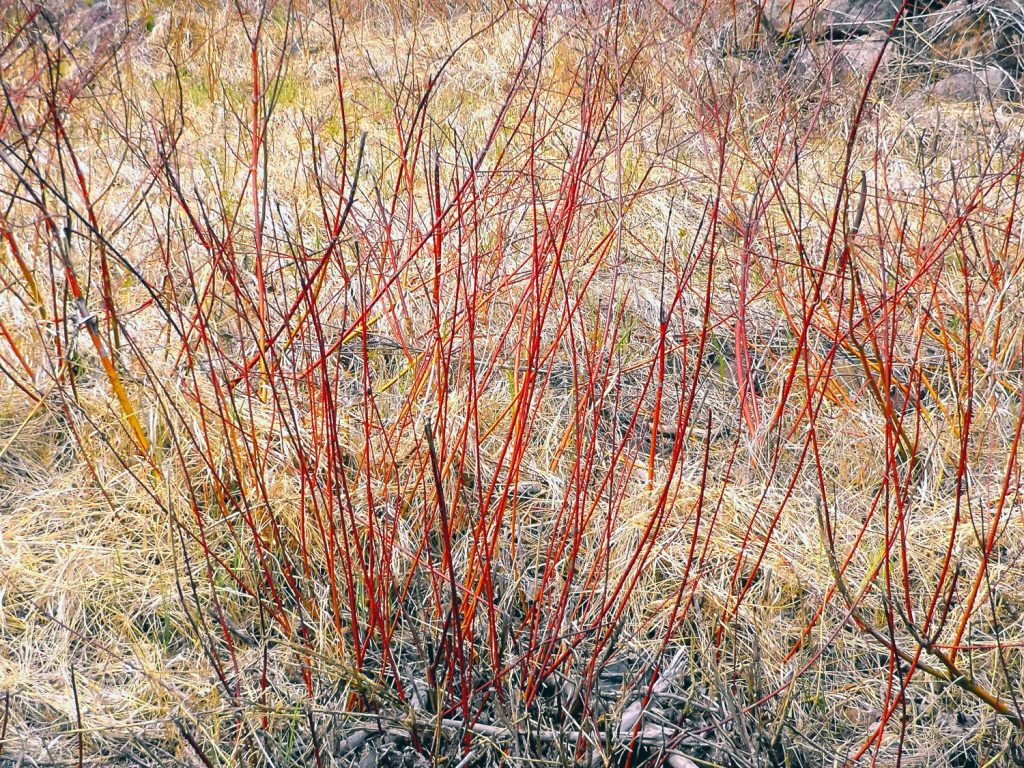
Cornus sericea / Red Twig Dogwood
Family: Cornaceae (dogwood)
Characteristics: Also known as Red Osier Dogwood; upwards spreading shrub that is Native to much of North America’s swampy, riparian, or wetland habitat; create beautiful contrast with snow- great addition for those who want colors in their garden during the winter months.
Height: 6-9 ft.
Season of Bloom: May-July
Bloom Color: White, dense blossoms (drupes) followed by white berries.
Light Requirements: Full Sun – Partial Sun
Water Requirement: Medium – Wet
Eco-Relationships: Deer resistant, attracts pollinators, grows well in wet and clay soils
Life zone: USDA Zones 3-8
Habitat: Wetlands, swamps, riparian zones, river edges, wetter climates.
FEBUARY
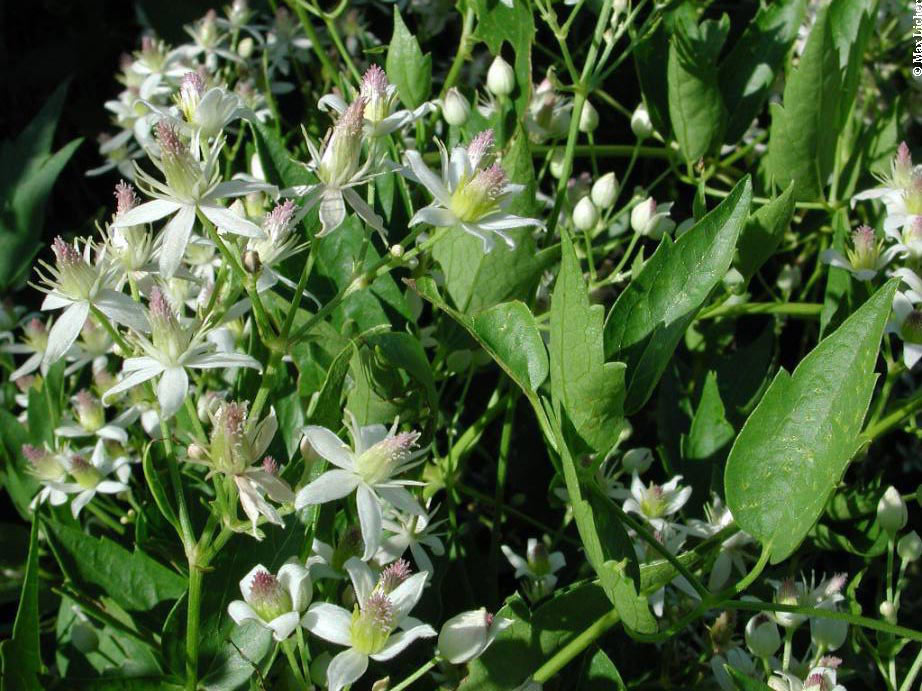
Clematis lingusticifolia/ Western Virgin’s Bower
Family: Ranunculaceae (Buttercup)
Characteristics: A woody perennial vine with small white flowers that bloom in clusters.Traditionally called Pepper Vine, and rumored to have been used by Native Americans to treat colds and sore throats.
Height: 12-36 feet
Season of bloom: Spring – Summer (April–August)
Bloom color: White/Cream
Light requirement: Full sun to shade
Water requirement: Medium to Less water
Soil requirement: Well-Draining soil
Eco-relationships: Flower heads attract a wide range of pollinators, especially birds; sub species can be poisonous; not deer resistant
Life Zone: USDA Zones 5-7
Habitat: Riparian Habitats; near running water and lake edges
MARCH
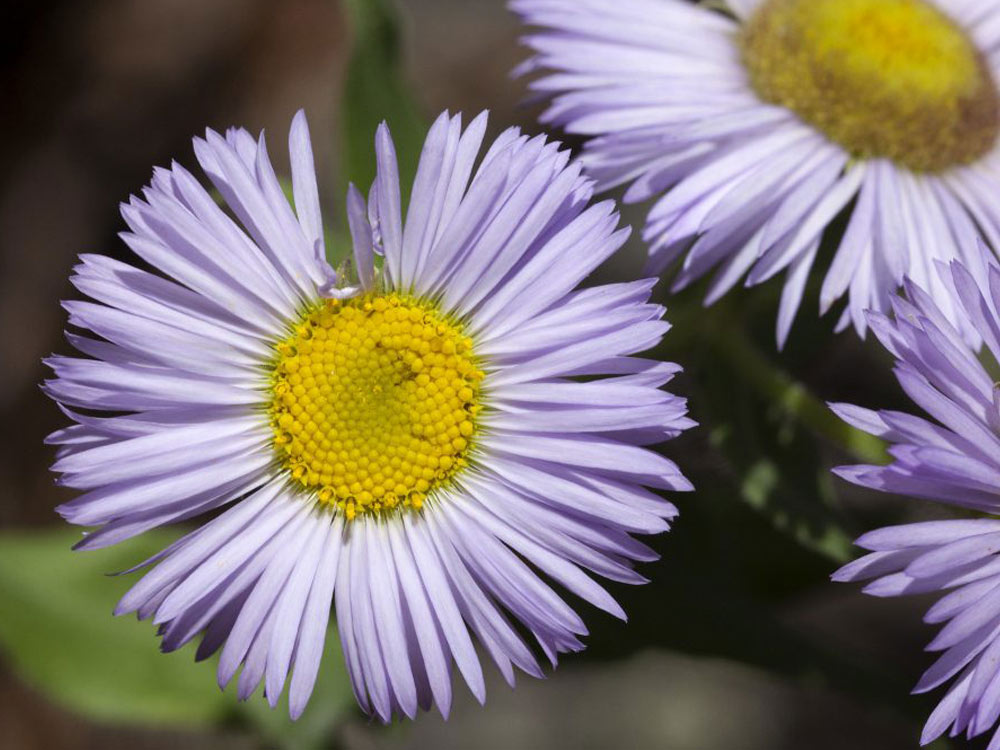
Erigeron speciosus/ Aspen Daisy
(Showy Fleabane)
Family: Asteraceae (sunflower)
Characteristics: Leafy stems with one thin, hairy, & purple petaled flower with a yellow center; grows in clumps or bunches called colonies that may need to be separated in a landscaping setting; highly adaptable to a range of sunlight & water availability.
Height: 1-3 feet
Season of bloom: Summer (June–October)
Bloom color: Very Light- Dark Purple
Light requirement: Full- almost Full Sun
Water requirement: Drought tolerant, but will tolerate watering.
Soil requirement: Dry to Moist soils; tolerant of varying soil conditions.
Eco-relationships: Flower heads attract and provide a landing platform for pollinators; attract a wide range of pollinators including true bugs, thrips, beetles, butterflies, moths, bees, and flies. Supports Conservation Biological Control (a plant that attracts predatory or parasitic insects that prey upon garden pests.)
Life zone: Zones 4-7; Foothills to subalpine
Habitat: Aspen groves, forest margins and openings at 6,000 to 11,000 feet
APRIL
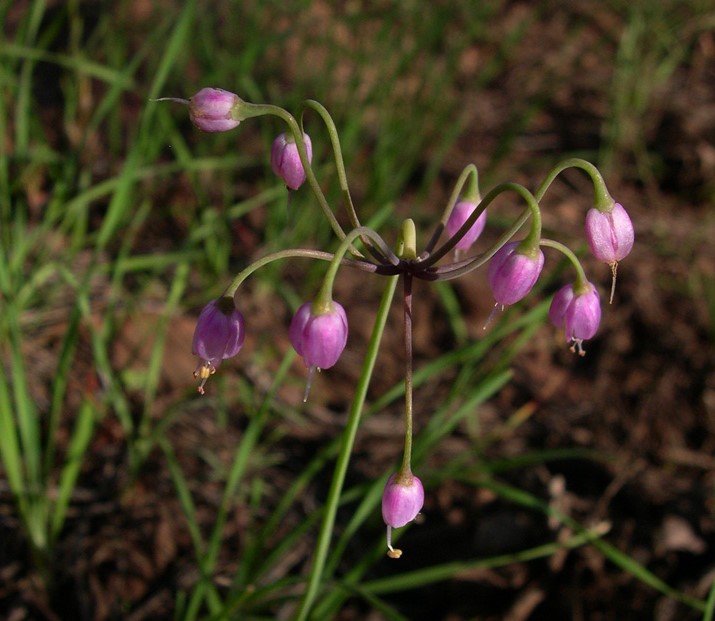
Allium cernuum / Nodding Onion
Family: Amaryllidaceae
Characteristics: Herbaceous native umbel (umbrella) that flowers in a ball shape; edible, although not considered culinary; used medicinally by Native American tribes.
Height: 1-1.5 ft.
Season of Bloom: June-August (Summer)
Bloom Color: White – Light Pink – Bright Pink
Light Requirements: Full – Partial Sun
Water Requirement: Dry – Medium
Eco-Relationships: Deer & Drought resistant, attracts pollinators, especially bees & butterflies.
Life Zone: USDA Zones 4-8
Habitat: Open woods, meadows, glades, rocky soils.
MAY
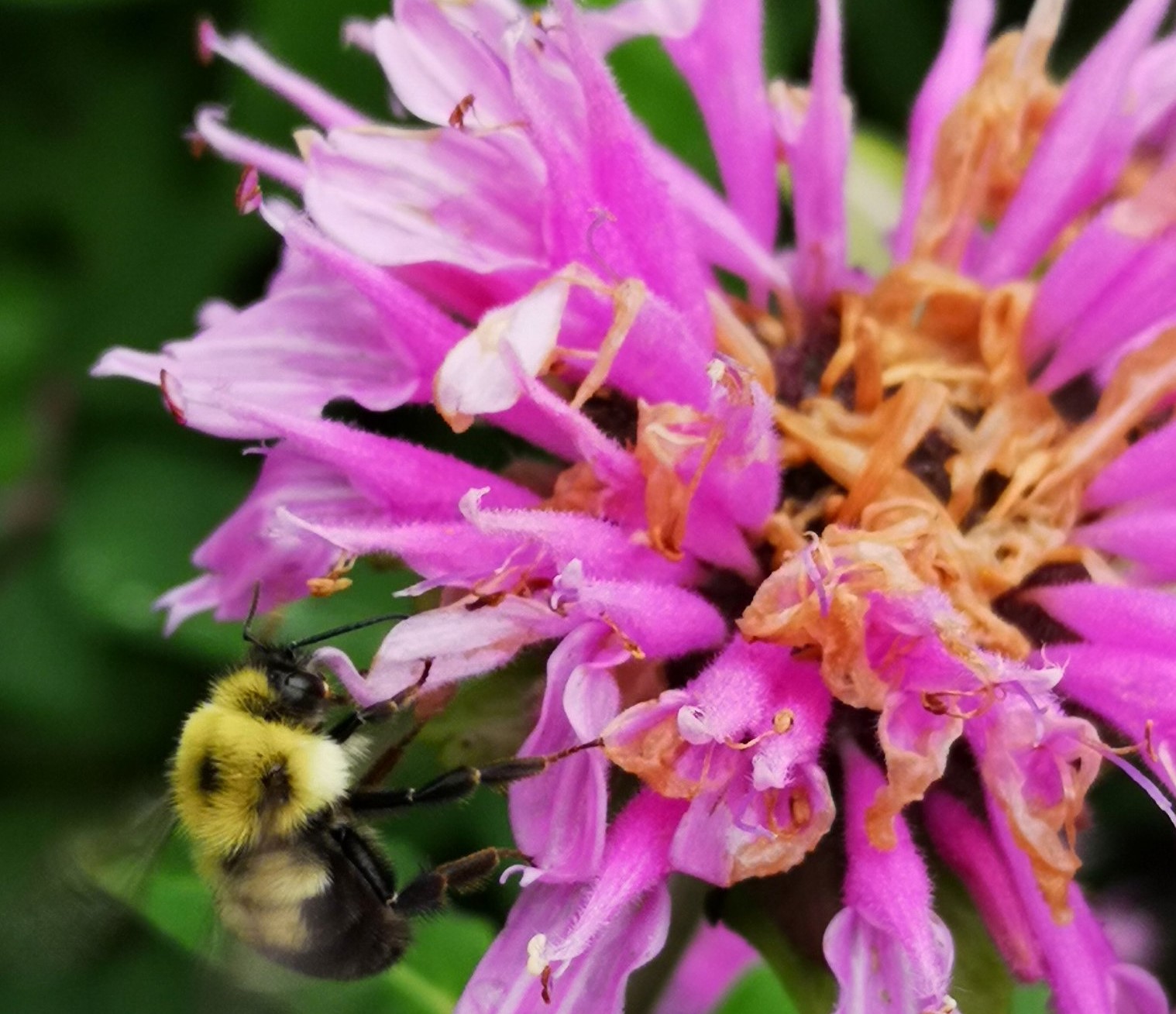
Monarda fistulosa/ Bee Balm
Family: Lamiaceae
Characteristics: A fragrant, flowering perennial also called “Wild Bergamot”; supports a wide range of native insect pollinators; used medicinally (topically, teas) by Native American tribes.
Height: 2-4 feet
Season of bloom: Late June-September (Summer)
Bloom color: White-Light Pink-Bright Pink
Light requirement: Full to Partial Sun
Water requirement: Dry to Medium, good air circulation needed!
Soil requirement: Well-Draining soils
Eco-relationships: Flowers attract a wide range of native pollinators, especially bees & butterflies; Deer resistant.
Life Zone: USDA Zones 3-9
Habitat: Prairies, fields, rocky forests, dry climates.
JUNE
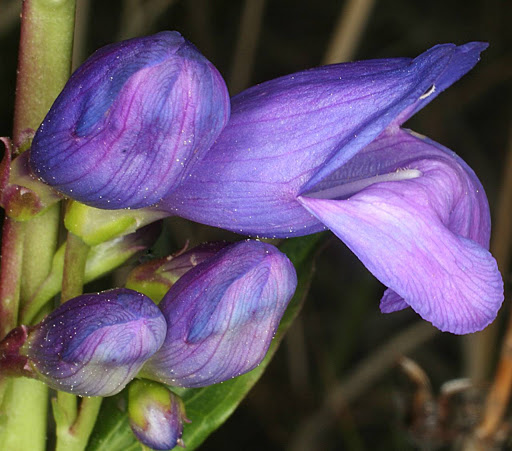
Penstemon strictus/ Rocky Mountain Penstemon
Family: Plantaginaceae (Plaintain)
Characteristics: Bright purple & indigo flower heads; blooms in Spring & Summer; prefers partial shade and dry, well-draining soils; Native to Wyoming, Colorado, Utah, New Mexico, & Arizona
Height: 1-3 feet
Season of bloom: Spring- Summer (May–July)
Bloom color: Royal Blue-Indigo-Purple
Light requirement: Full- Partial Sun
Water requirement: Low-Medium
Soil requirement: Dry, well-draining soils
Eco-relationships: Perennial that blooms Spring-Summer & attracts pollinators (specifically bumble bees & native bees), can tolerate wetter zones.
Life zone: USDA Zones 4-9
Habitat: Subalpine & Valleys; Conifer & Sagebrush forests.
JULY
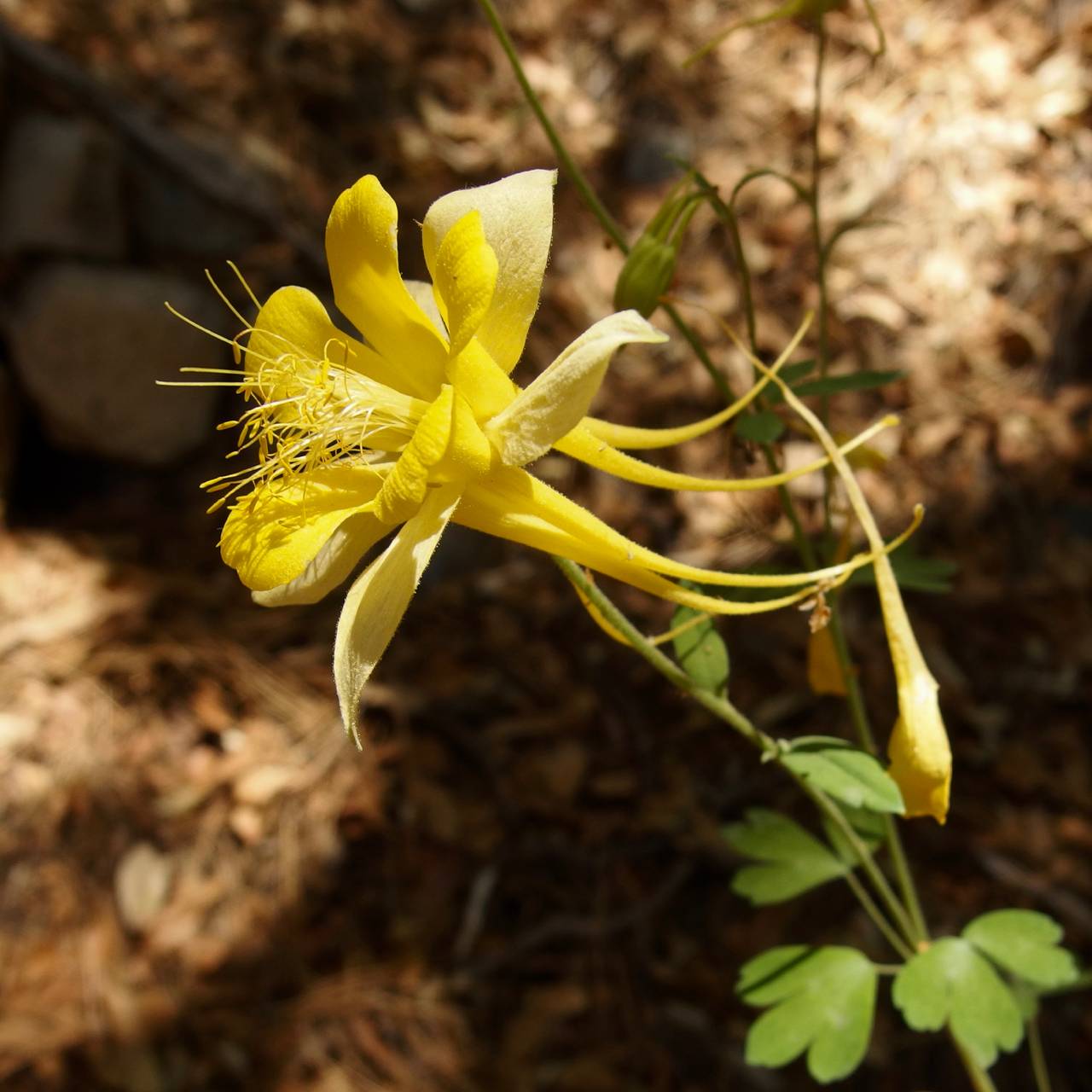
Aquilegia chrysantha / Yellow Columbine
Family: Ranunculaceae (Buttercup)
Characteristics: A particularly showy species of native, perennial columbine; can rot in poorly draining soils & can suffer in extreme/excessive direct sunlight; Genus (Aquilegia) named because of the resemblance to the talons of an Eagle (Aquila in Latin).
Height: 2-3 ft.
Season of Bloom: May-August (Late Spring-Summer)
Bloom Color: Yellow
Light Requirements: Full – Partial Sun
Water Requirement: Dry – Medium
Eco-Relationships: Deer & Rabbit resistant, attracts pollinators, especially butterflies, moths, & hummingbirds.
Life Zone: USDA Zones 3-9
Habitat: Tolerates a wide range of soils; damp canyons & rocky areas in the SW, specifically in the Chihuahan & Sonoran Deserts.
AUGUST
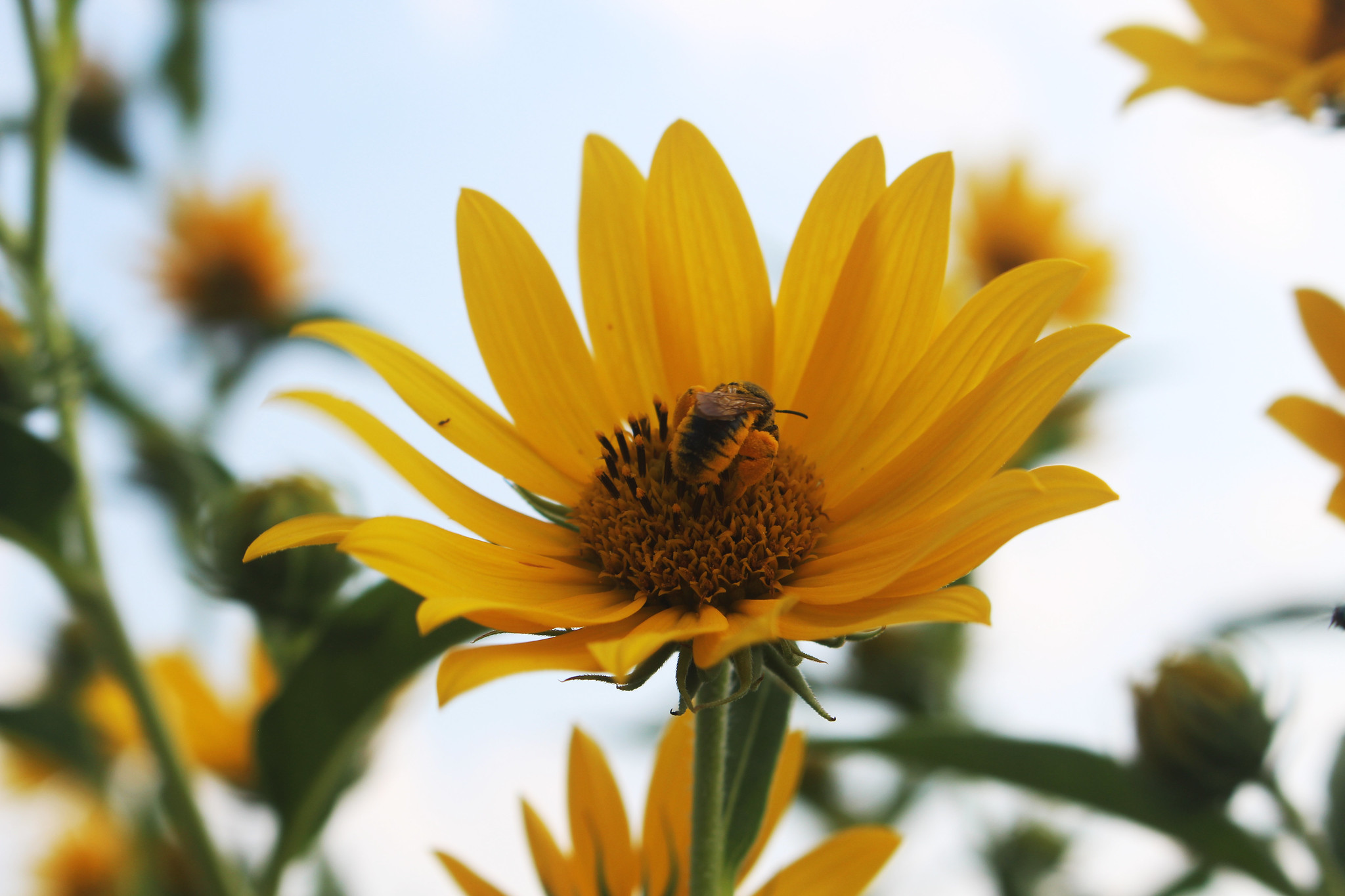
Helianthus maximiliani / Maximilian Sunflower
Family: Asteraceae
Characteristics: A sunflower that is native to the Great plains & prairies; a smaller flower head in comparison to other sunflowers; yellow, dark yellow, or light brown center; commonly used as forage for livestock.
Height: 3-9 ft.
Season of Bloom: Late July – September (Late Summer)
Bloom Color: Yellow
Light Requirements: Full Sun
Water Requirement: Dry – Medium
Eco-Relationships: Deer & Drought resistant, attracts pollinators, especially butterflies, bees, and birds.
Life Zone: USDA Zones 4-9
Habitat: Tolerates a wide range of soils, including clay, sand, dry, & rocky.
SEPTEMBER
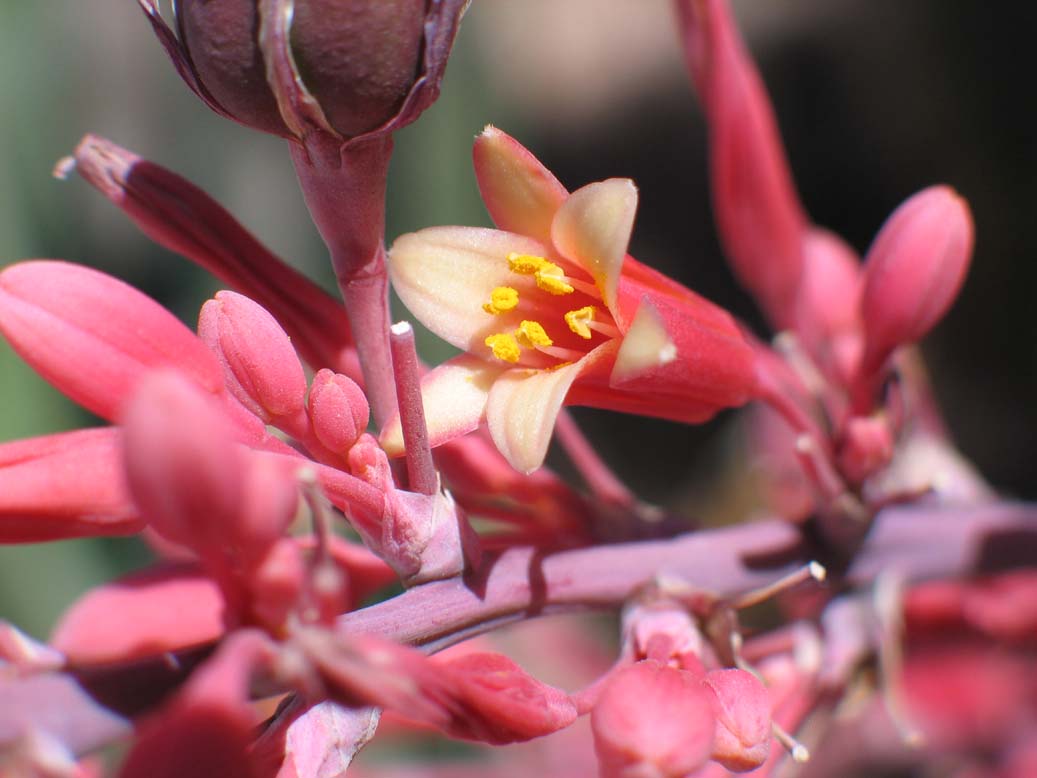
Hesperaloe parviflora / Red Yucca
Family: Asparagaceae (Asparagus Family)
Characteristics: Closely related to Yuccas, but in the Asparagus Family; Native to dry zones in North America (specifically the Chihuahuan desert in Texas & northeastern New Mexico); Long lasting blooms or secondary blooms in Autumn & even in Winter if it is mild.
Height: 3-5 ft.
Season of Bloom: July – September (Summer)
Bloom Color: Pink/Red/Orange, Yellow center
Light Requirements: Full Sun
Water Requirement: Low
Eco-Relationships: Attracts pollinators- especially great for Hummingbirds; Tolerates urban environments well; May attract Deer, who feed on the foliage.
Life Zone: USDA Zones 5-10
Habitat: Tolerates poor soil conditions: Dry, Extremely Well-Draining, & Sandy; found in Deserts, Grasslands/Prairies, Rocky environments.
OCTOBER
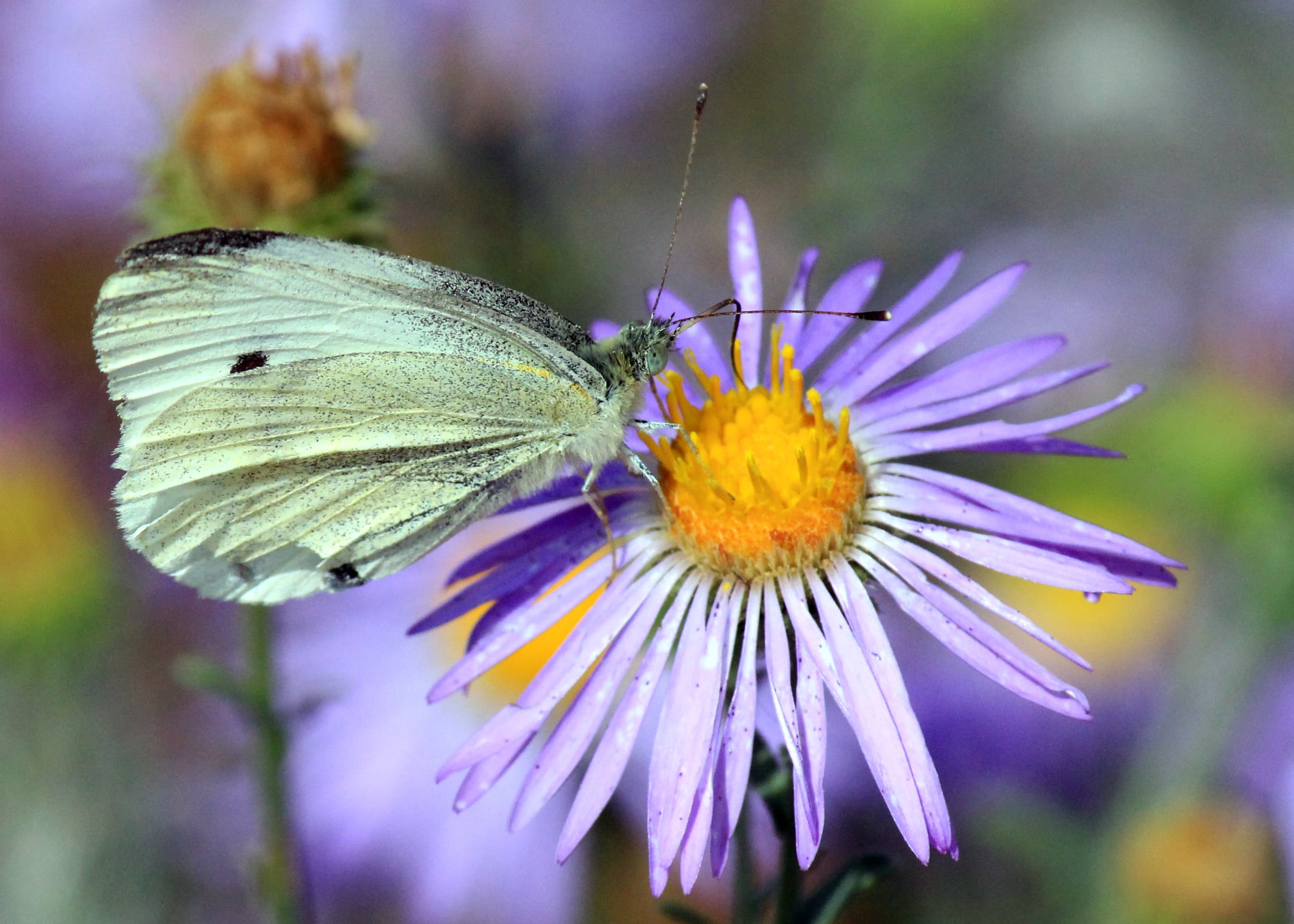
Machaeranthera bigelovii / Bigelow’s Tansyaster
Family: Asteraceae (Aster)
Characteristics: A particularly late blooming wildflower; grows well in poor, dry soils in the Southwest US; late blooms & extreme drought tolerance are beneficial for native pollinators & reclamation.
Height: 1-3 ft.
Season of Bloom: Late July – October (Late Summer – Fall)
Bloom Color: Purple with Yellow centers
Light Requirements: Full Sun
Water Requirement: Dry
Eco-Relationships: Attracts native pollinators, especially bees, butterflies, & moths; late bloom beneficial to pollinators, provides food source late in the season after most flowers have turned to seed.
Life Zone: USDA Zones 5-10
Habitat: Tolerates extreme drought; plains, prairies, & coniferous forests in the SW.
NOVEMBER
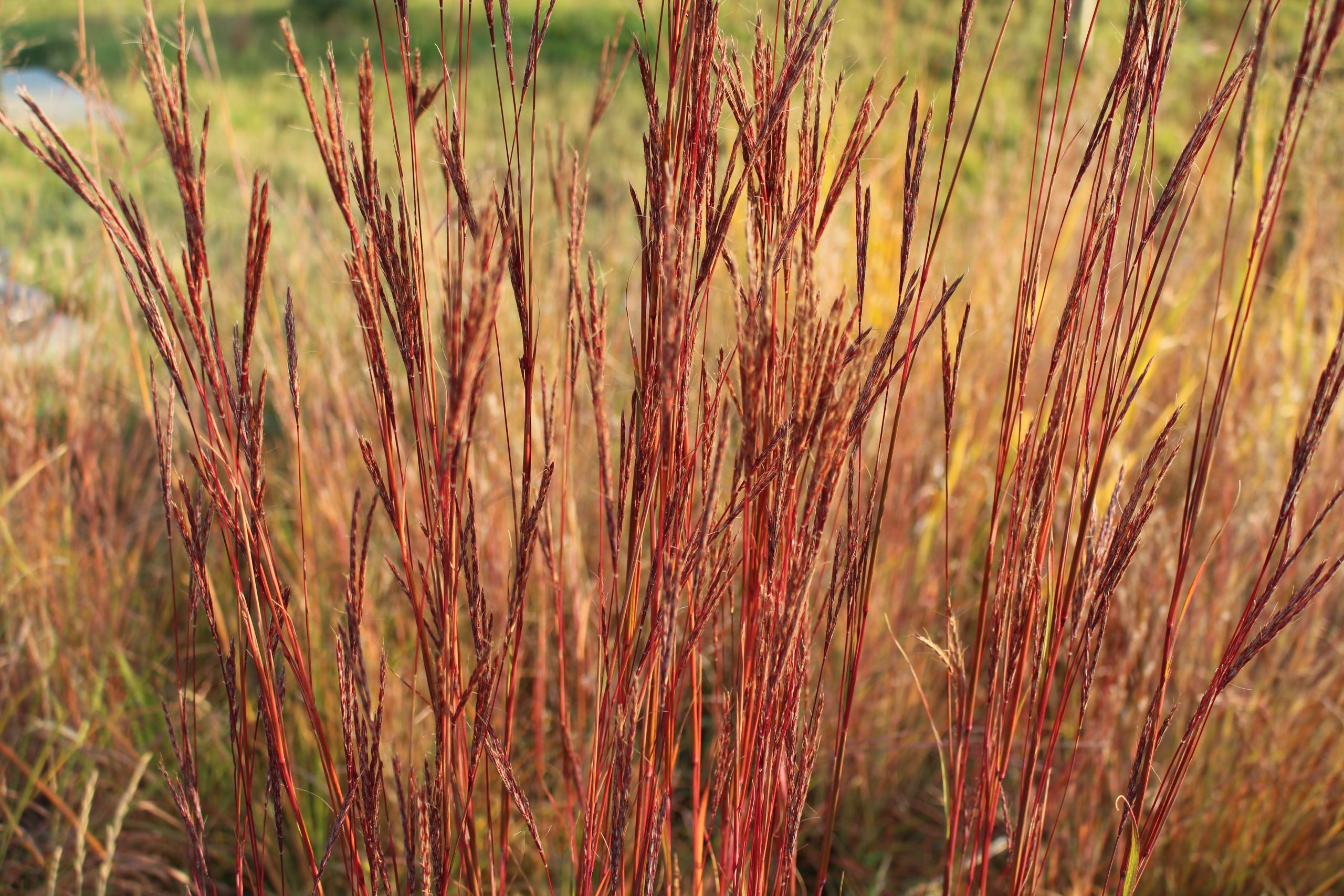
Andropogon gerardii / Big Bluestem
Family: Poaceae
Characteristics: Perennial Ornamental grass; warm-season grass; native to Missouri & tall-grass prairie ecosystems; also called “Turkeyfoot” grass because of its head, which separates into 3 clusters that resemble a Turkey’s foot.
Height: 3-8 ft.
Season of Bloom: August – November
Bloom Color: Grasses begin gray & green; turn deep red, yellow, purple, and indigo after the first frost.
Light Requirements: Full Sun
Water Requirement: Dry – Medium
Eco-Relationships: Deer resistant, evolved to withstand seasonal grazing of migratory bison, attracts birds & butterflies.
Life Zone: USDA Zones 4-9
Habitat: Tolerates drought; central plains/prairies, wet grasslands & low meadows.
DECEMBER
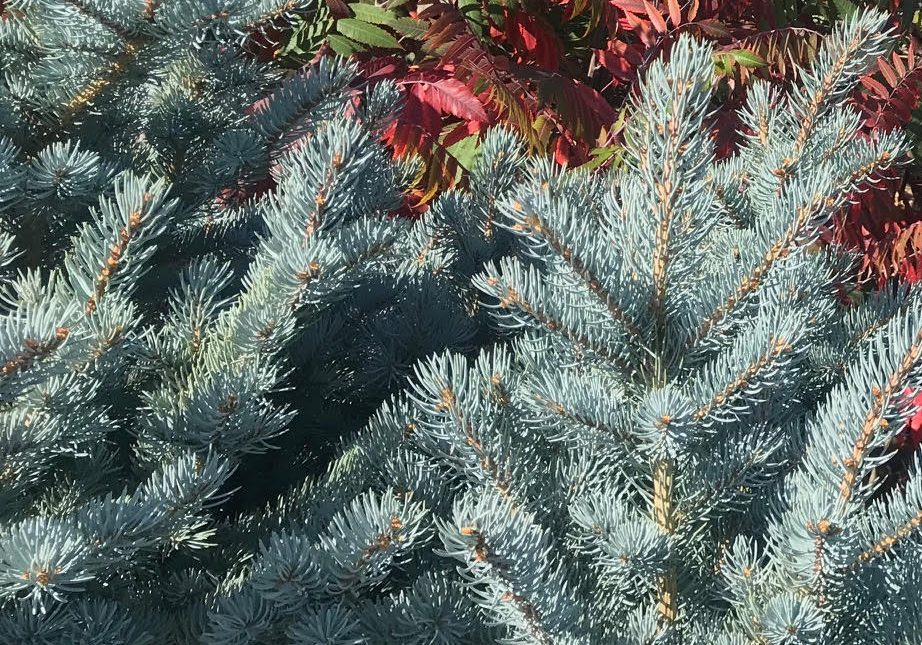
Picea pungens / Colorado Blue Spruce
Family: Pinaceae
Characteristics: Colorado spruce (also blue spruce), is a medium to large, narrow, pyramidal conifer with horizontal branching to the ground.
Height: 30-60 ft.
Season of Bloom: Non-flowering
Bloom Color: Green to blue-green to silver-blue needles
Light Requirements: Full Sun, some light shade
Water Requirement: Moist
Eco-Relationships: Native to the central Rocky Mountains from southern Montana and eastern Idaho south to New Mexico where it is typically found growing in moist locations from 6000 to 11000 feet in elevation.
Life Zone: USDA Zones 2-7
Habitat: Found in native conifer forests; tolerates drought, deer, and rabbit
Sign Up for the HPEC Newsletter
Enter your name and e-mail to be added to HPEC’s Monthly E-Newsletter! We’ll send you an email with exciting news, upcoming events, and volunteer projects. This is the best way to stay in the loop about all things HPEC!
